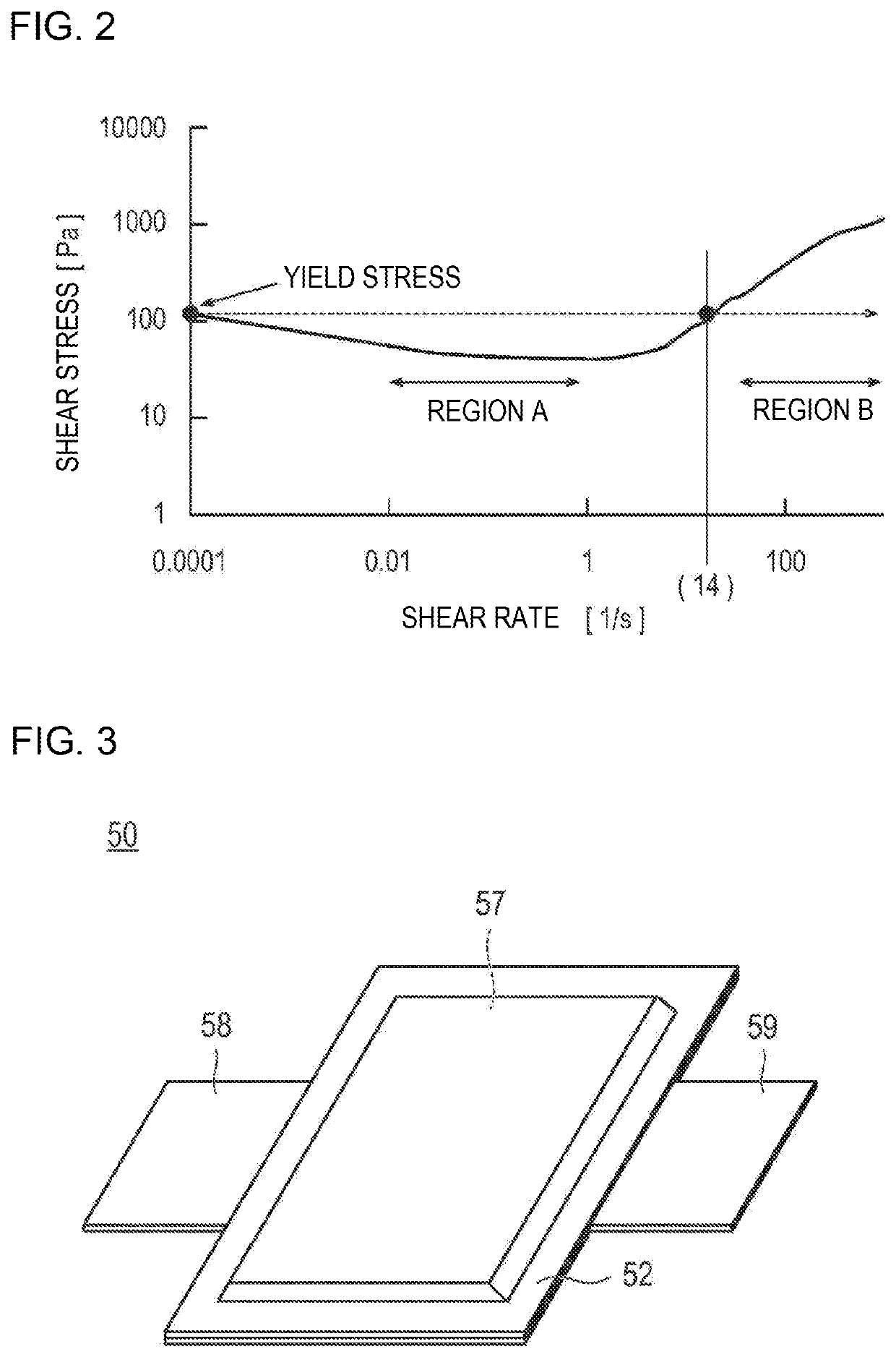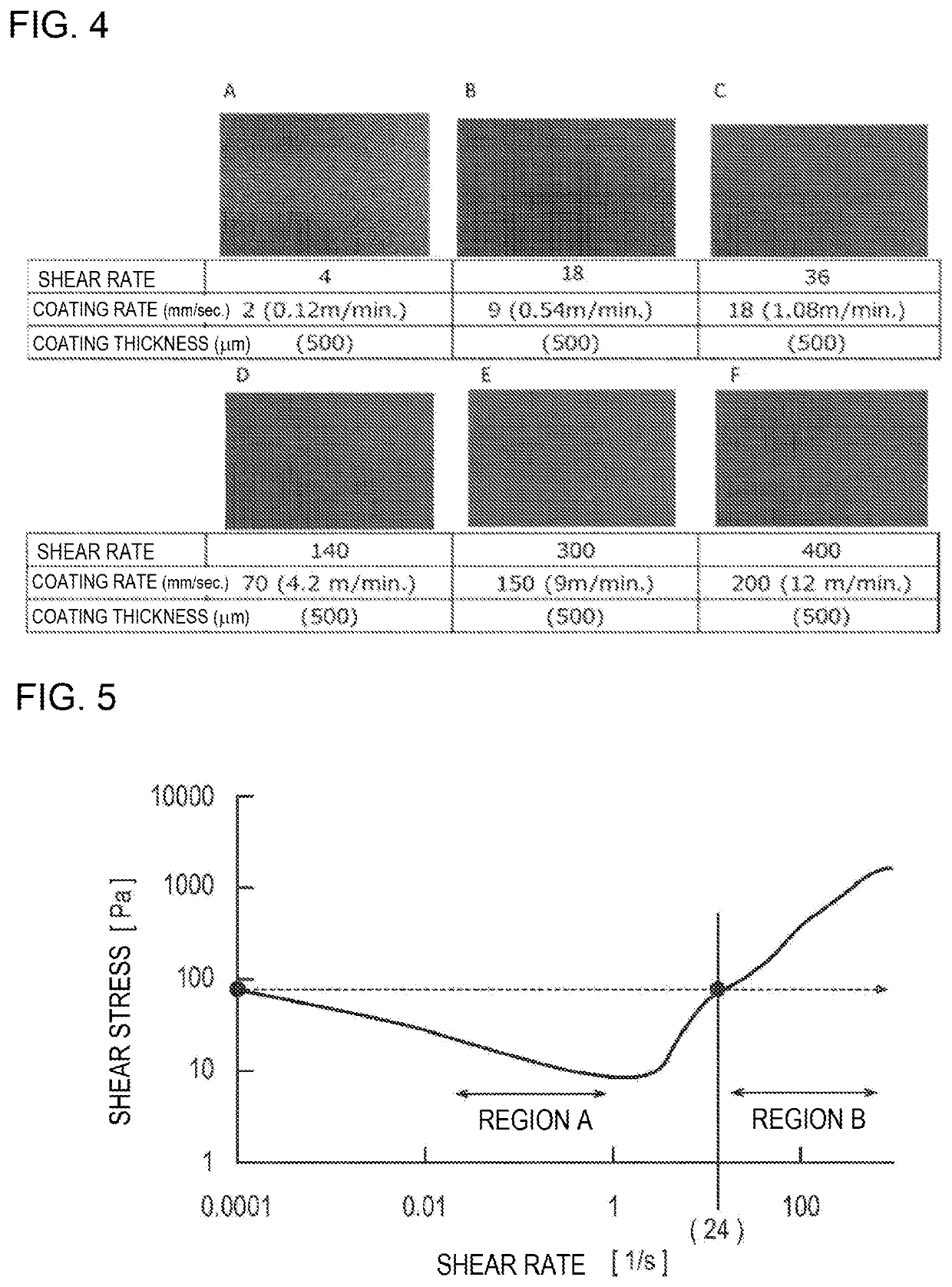Method for producing battery electrode
a battery electrode and electrode technology, applied in the manufacturing process of electrodes, cell components, electrochemical generators, etc., can solve the problems of battery capacity decline, difference in potential in the electrode plane, and structural disorder caused by expansion and contraction of negative electrode active material, etc., to achieve free control of capacity and voltage, high output, and high capacity
- Summary
- Abstract
- Description
- Claims
- Application Information
AI Technical Summary
Benefits of technology
Problems solved by technology
Method used
Image
Examples
example 1
[0229]A coating film (negative electrode active material layer) was formed on the surface of the current collector by the same method as in Comparative Example 1 described above, except that the coating rate was set to 9 [mm / s]. Incidentally, since the coating rate in this Example was 9 [mm / s], the shear rate was 9 [mm / s] / 0.5 [mm]=18 [l / s], and the shear stress corresponding to this was a value larger than the yield stress of the used negative electrode active material slurry.
example 2
[0230]A coating film (negative electrode active material layer) was formed on the surface of the current collector by the same method as in Comparative Example 1 described above, except that the coating rate was set to 18 [mm / s]. Incidentally, since the coating rate in this Example was 18 [mm / s], the shear rate was 18 [mm / s] / 0.5 [mm]=36 [l / s], and the shear stress corresponding to this was a value larger than the yield stress of the used negative electrode active material slurry.
example 3
[0231]A coating film (negative electrode active material layer) was formed on the surface of the current collector by the same method as in Comparative Example 1 described above, except that the coating rate was set to 70 [mm / s]. Incidentally, since the coating rate in this Example was 70 [mm / s], the shear rate was 70 [mm / s] / 0.5 [mm]=140 [l / s], and the shear stress corresponding to this was a value larger than the yield stress of the used negative electrode active material slurry.
PUM
| Property | Measurement | Unit |
|---|---|---|
| size | aaaaa | aaaaa |
| tensile elongation at break | aaaaa | aaaaa |
| temperature | aaaaa | aaaaa |
Abstract
Description
Claims
Application Information
 Login to View More
Login to View More - R&D
- Intellectual Property
- Life Sciences
- Materials
- Tech Scout
- Unparalleled Data Quality
- Higher Quality Content
- 60% Fewer Hallucinations
Browse by: Latest US Patents, China's latest patents, Technical Efficacy Thesaurus, Application Domain, Technology Topic, Popular Technical Reports.
© 2025 PatSnap. All rights reserved.Legal|Privacy policy|Modern Slavery Act Transparency Statement|Sitemap|About US| Contact US: help@patsnap.com



